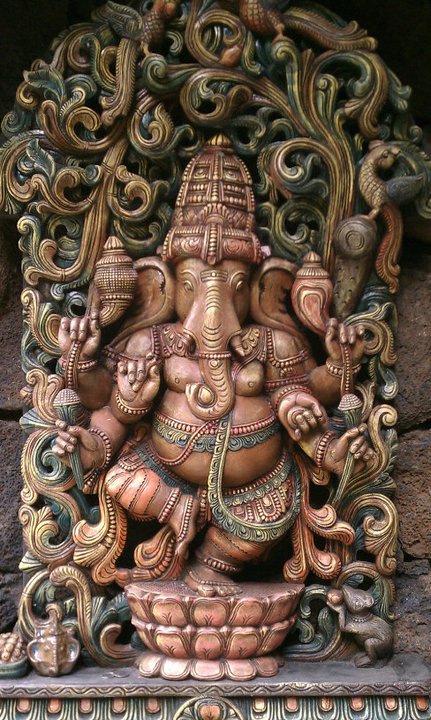Search Other Posts
I want to talk about Pratyahara and offer a helpful breathing practice to accompany it. First I feel I need to give it a little context.
Yoga 101
Yoga is old. One of the earliest mentions of yoga comes from the Rig Veda, one of the oldest vedic texts dating somewhere around 1700–1100 BC. So, OLD.
Patanjali was a yoga scholar (some say a school of thought—doesn’t matter) around 200–500 CE who wrote a generalized guide to yoga called The Yoga Sutras. Sutra is a Saskrit word meaning suture or stitch. The Yoga Sutras are therefore 196 verses “stitched” together in order to create a larger patchwork of what yoga’s main goal is and how to practice it.
In the Yoga Sutras, Patanjali starts by defining yoga as the ability to calm the mind into stillness to arrive at a state of Oneness with all things. He outlines 8 limbs of yoga or ways to practice arriving at this Oneness. These 8 limbs are presented from gross to subtle ways to practice yoga.
The 8 Limbs of Yoga
The first limb is the Yamas or outward observances, the way we treat the world. If we’re assholes to everyone around us, we’re missing the essential point that somehow I’m everything and only hurting myself.
Second is Niyamas, or inner observances, the way I treat my inner comportment, my cleanliness, contentment, and ability for self-discovery through work and submission.
Third comes yoga Asanas, or the poses, how literally applying this knowledge to the body, mind, and spirit of my personal being and attempting to discover the unification of all of these. This is what most of us refer to when we think of yoga. That’s fine—you don’t have to start practicing at the beginning—whatever gets you onto the path.
Fourth, Pranayama refers to how this work affects one’s energy through breathwork and other energy manipulation through the chakras, or primary energy stations located along our spine.
Fifth, and this is what I want to talk about most today, come Pratyahara or gaining control over external influences and learning to withdraw from our senses as the entrance into the inner-being.
Photo by Alex Adams
Sixth is Dharana, or fixed concentration on one thing.
Seventh, Dhyana, deeper concentration where you begin to lose your sense of individuality and the object you’re observing start to merge.
Lastly the eights limb is Samadhi, or the state of Oneness.
So now you’ve got probably more information than you need about yoga philosophy and ancient texts, what does this Pratyahara business have to do with me?
If you’ve ever tried meditating, you’ve likely tried at least a few ways of meditating and discovered one or two ways that really help you to go deep into your meditation, where something begins to happen and we start to get that meditation hit that everyone is talking about. In part, this ability to go deeper into ourselves starts with Pratyahara.
The senses are a wonderful tools of cultivating presence. Paying attention to our senses help us wrangle in our wild and wandering mind to a state that is here and now. We’ve used our senses perhaps with the “There Is” Practice or similar practices. However, getting stuck into this mode of paying attention to what is outside maintains external attention and might prevent a deeper inner-journey. So, learning to move beyond our senses inward to a state of raw here-and-now-ness may deepen your meditation practice.
Your senses are always firing and constantly giving the brain information. In fact, there’s so much information happening all the time, that our brains have to learn to filter and select what is essential and what it can turn off. Pratyahara experiments with learning to turn ALL the senses off to find a state of deeper inner-awareness on our pathway to discover that the answers are within instead of outside of us.
To to practice Pratyahara start by listening to your senses and then go inward beyond them.
Breathing Practice to Complement Pratyahara
Here’s a breathing practice followed by a meditation that can help you with just this
Brahmari: Bumble Bee Breath
Brahmari breath is kinda weird so bear with me. What you do is sit, close your eyes, and place your hands on your face with your index fingers over your eyebrows, your middle fingers covering your eyes, fourth fingers just below your nostrils, and little fingers under your lips. Your fourth and fifth fingers therefore create a cradle around your mouth. Your thumbs gently plug your ears. This closes all the exits, except your nostrils. Now, you release your pinkies to take in a big breath through your mouth, replace your pinkies and close your mouth and let out a long hum until you have no more breath. When you’re empty, breathe in again and do another round. Continue for several rounds. Have fun with this: try high pitches, low pitches, make up little tunes— whatever. Ideally, you’ll drown out all other senses except the sound of your own humming in your head.
You may also choose to omit the crazy hands-to-face business and use earplugs and an eye mask—less adventurous but probably just as effective.
This practice will confirm to your neighbors peeping through the windows that yes, you finally have gone nuts and that they should probably look for another neighborhood. Better just to have some private space to do this.
After several minutes of this, keep your eyes closed and choose a meditation that cultivates a strong internal focus, something like mantra meditation or mindfulness meditation.
I might suggest using the Insight Timer and setting your timer for 20 minutes using an interval bell to ding after 5 minutes. Do the Brahmari breath for 5 minutes and after the interval bell dings, try a mantra or mindfulness meditation for the remaining 15 minutes.
This will be a great 20 minute practice to really cultivate inner-focus.
If you’re curious, give this a shot and let me know how it goes.








